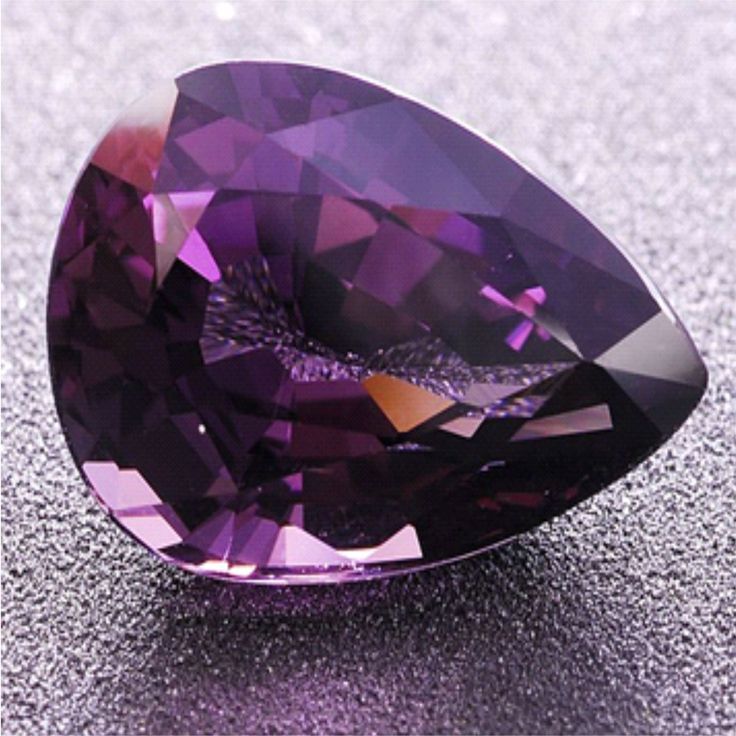Rare gemstones have fascinated people for centuries. Some are prized for their beauty, while others hold historical significance. Among these, one crystal stands out as the rarest of them all. With only about 50 known samples worldwide, taaffeite remains a mystery to many. Unlike common gemstones such as diamonds or amethysts, this unique mineral is often mistaken for spinel. Despite being discovered nearly a century ago, taaffeite remains largely unknown outside the gemological community. Scientists and collectors alike continue to search for new sources, but its extreme scarcity makes this a challenging pursuit.
Taaffeite is not just rare; it is exceptionally unique in its formation. Most gemstones are discovered in their raw, uncut state within natural rock formations. However, taaffeite was first recognized in a faceted form, meaning it had already been shaped and polished. This adds another layer of intrigue to its history, making it unlike any other gemstone in the world. To this day, only a handful of people have had the privilege of owning or even seeing a taaffeite stone in person.
The Accidental Discovery of Taaffeite

Taaffeite was first identified in 1945 by Richard Taaffe, an Irish gemologist. While examining a batch of gemstones purchased from a jeweler, he noticed something unusual. One stone, a mauve-colored gem, displayed double refraction—a property not found in spinel. This discovery led to the recognition of taaffeite as a new mineral species. It remains the only known gemstone first identified as a cut and polished stone rather than in its natural form.
The circumstances of its discovery make taaffeite one of the most intriguing gemstones in history. Richard Taaffe’s sharp eye and deep knowledge of gemology led him to question the stone’s true identity. Many other experts had handled similar gems before him, but none had noticed the key differences. His curiosity and persistence changed the field of mineralogy forever. Without his observation, taaffeite may have continued to be misidentified as spinel for decades longer. The stone that sparked this discovery was later studied in greater detail, leading to the eventual classification of taaffeite as a completely separate mineral.
A Case of Mistaken Identity

For years, taaffeite went unnoticed because it was confused with spinel. Both gems share similar colors, including pink, lavender, and peach, due to their chromium content. However, their optical properties differ significantly. While spinel is singly refractive, taaffeite is double refractive, allowing it to bend light in two directions. This key distinction helped scientists confirm its uniqueness and rarity.
This confusion with spinel raises an interesting question—how many taaffeite stones have been overlooked? Since most known samples were found already cut and polished, there is a real possibility that more taaffeite stones exist but have been incorrectly classified. Gemologists continue to study older collections, hoping to uncover hidden specimens. As technology advances, newer methods of identification may allow for more taaffeite discoveries in the future. However, with so few natural sources known, the chances of finding large deposits remain slim.
Where Is Taaffeite Found?

Despite its rarity, taaffeite has been located in a few regions worldwide. The first natural deposits were discovered in Sri Lanka and southern Tanzania. Some lower-quality specimens have also been found in China’s limestone formations. Even with these findings, taaffeite remains an exceptionally rare mineral, making it difficult to acquire in the gem market.
Sri Lanka remains the most well-known source of taaffeite, with many of the identified specimens originating from the country. The presence of taaffeite in limestone formations in China suggests that it may be more widely distributed than previously thought, but still extremely rare. Some experts believe that additional deposits may exist in other parts of the world, but until they are found, the available supply remains limited. The difficulty in identifying taaffeite further complicates the search, as many samples remain mixed in with spinel or other gemstones.
Read More: 40 Valuable Antiques That Could Be Hiding In Your Attic
The Beauty and Durability of Taaffeite

Taaffeite is highly valued not just for its rarity but also for its durability. It has a Mohs hardness rating of 8 to 8.5, making it harder than quartz but softer than diamonds. Its translucency allows light to pass through, enhancing its brilliance. When cut for jewelry, oval and cushion shapes are preferred to maximize carat weight. Due to its limited supply, few people own taaffeite jewelry.
The aesthetic appeal of taaffeite is undeniable. The range of colors, from soft pastels to deeper hues, makes it highly desirable among collectors. Unlike many other rare gems that can appear dull or lifeless, taaffeite’s ability to refract light gives it a dazzling appearance. However, its extreme rarity means that it is rarely seen in mainstream jewelry markets. Most taaffeite stones are sold to high-end collectors, museums, or specialty gem dealers. If someone does come across a piece of taaffeite jewelry, it is often an heirloom passed down through generations or a custom-made luxury item.
The High Price of Rarity

The rarity of taaffeite makes it an expensive gemstone. Prices vary based on color saturation and quality. Light pink and dark purple stones sell for $800 to $2,500 per carat. High-quality pieces with rich colors can reach between $5,500 and $7,500 per carat. Exceptional gems, such as a lavender kite-shaped taaffeite, have even sold for $20,000 at auction. With so few specimens available, the value of taaffeite remains consistently high.
Compared to other rare gemstones, taaffeite’s price reflects its extreme scarcity. Even high-quality diamonds, rubies, or sapphires are found in much larger quantities, making them relatively more affordable. The most valuable taaffeite specimens are those with intense color saturation and a high degree of clarity. Some collectors see taaffeite as an investment, as its price is expected to continue rising due to its rarity. While not as well-known as diamonds or emeralds, taaffeite holds a special place in the world of gemology.
Other Rare Crystals Worth Noting

While taaffeite is the rarest, other crystals are also highly sought after. Jadeite, a type of jade, is valued for its deep green color and durability. Found primarily in Myanmar, top-quality jadeite, known as “Imperial jade,” can cost around $400 per carat. Another rare gemstone, red beryl, is found in Utah and is sometimes more valuable than diamonds. Each of these rare minerals tells a story of geological uniqueness and historical significance.
Jadeite and red beryl, like taaffeite, have their own fascinating histories. Imperial jade has been prized for centuries, especially in Chinese culture, where it is considered a symbol of wealth and status. Red beryl, also known as “bixbite,” is so rare that for every 150,000 diamonds found, only one red beryl is discovered. These rare gemstones continue to captivate collectors and researchers, much like taaffeite.
A Gem Like No Other

Taaffeite’s accidental discovery and extreme rarity make it a standout among gemstones. Unlike diamonds or sapphires, it remains largely unknown to the general public. With only about 50 known samples, owning taaffeite is a privilege reserved for a select few. Its mysterious past and incredible beauty ensure that it will remain one of the world’s most fascinating and valuable crystals. As more discoveries are made and technology advances, perhaps more taaffeite specimens will be uncovered. Until then, it remains one of the most elusive and extraordinary minerals on Earth.
Read More: People Ask The Internet For Help Identifying Odd Objects That Are Nearly a Century Old

